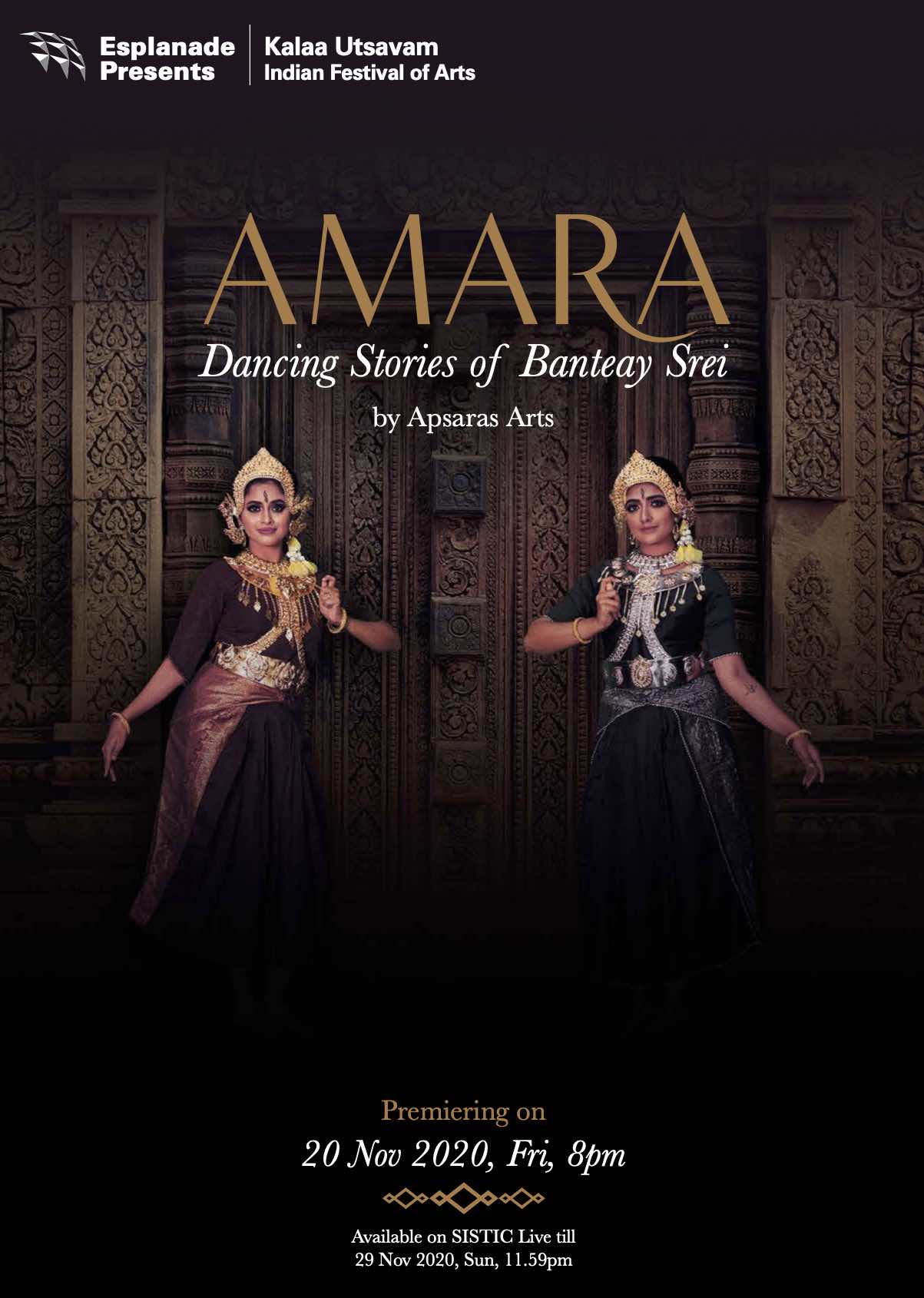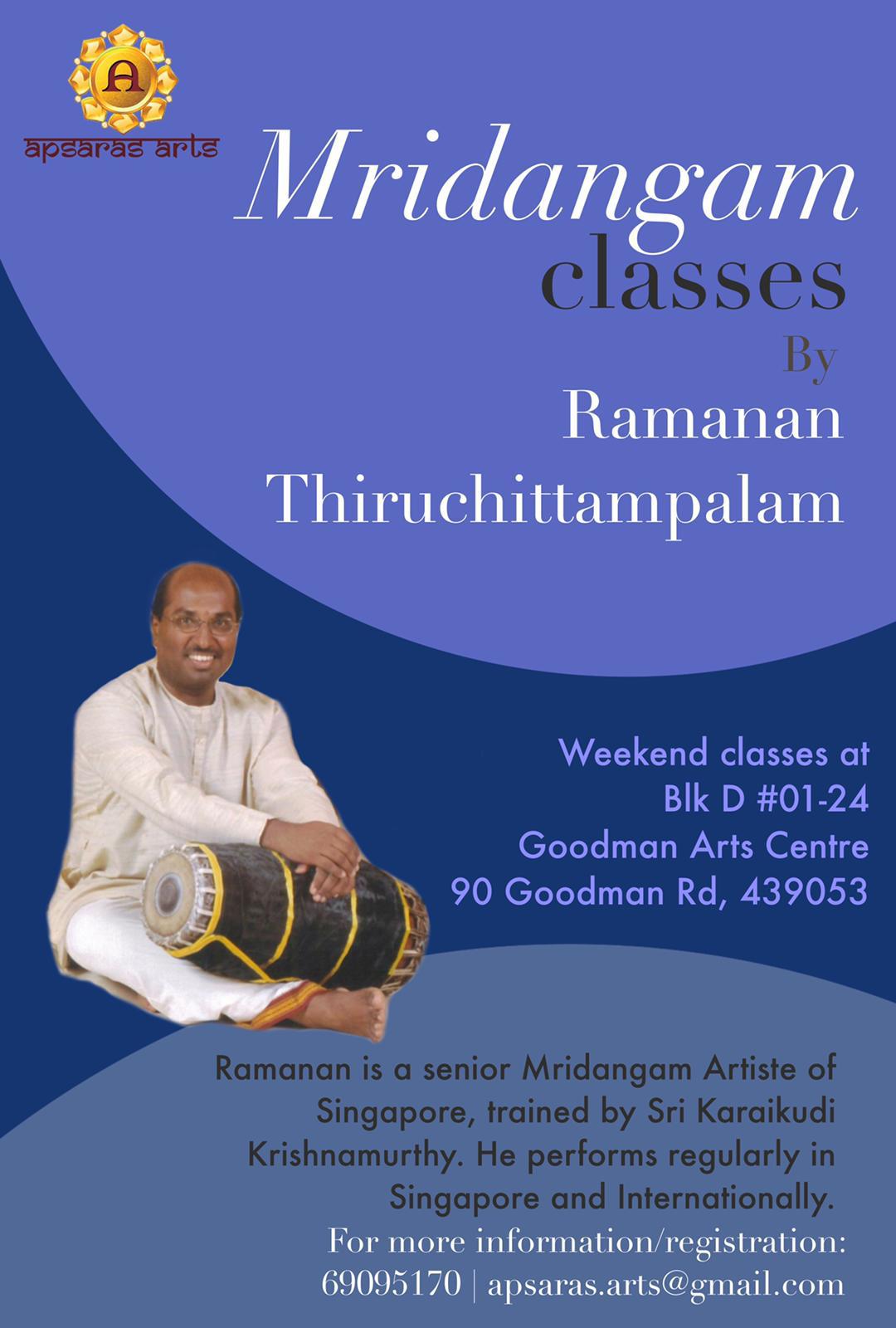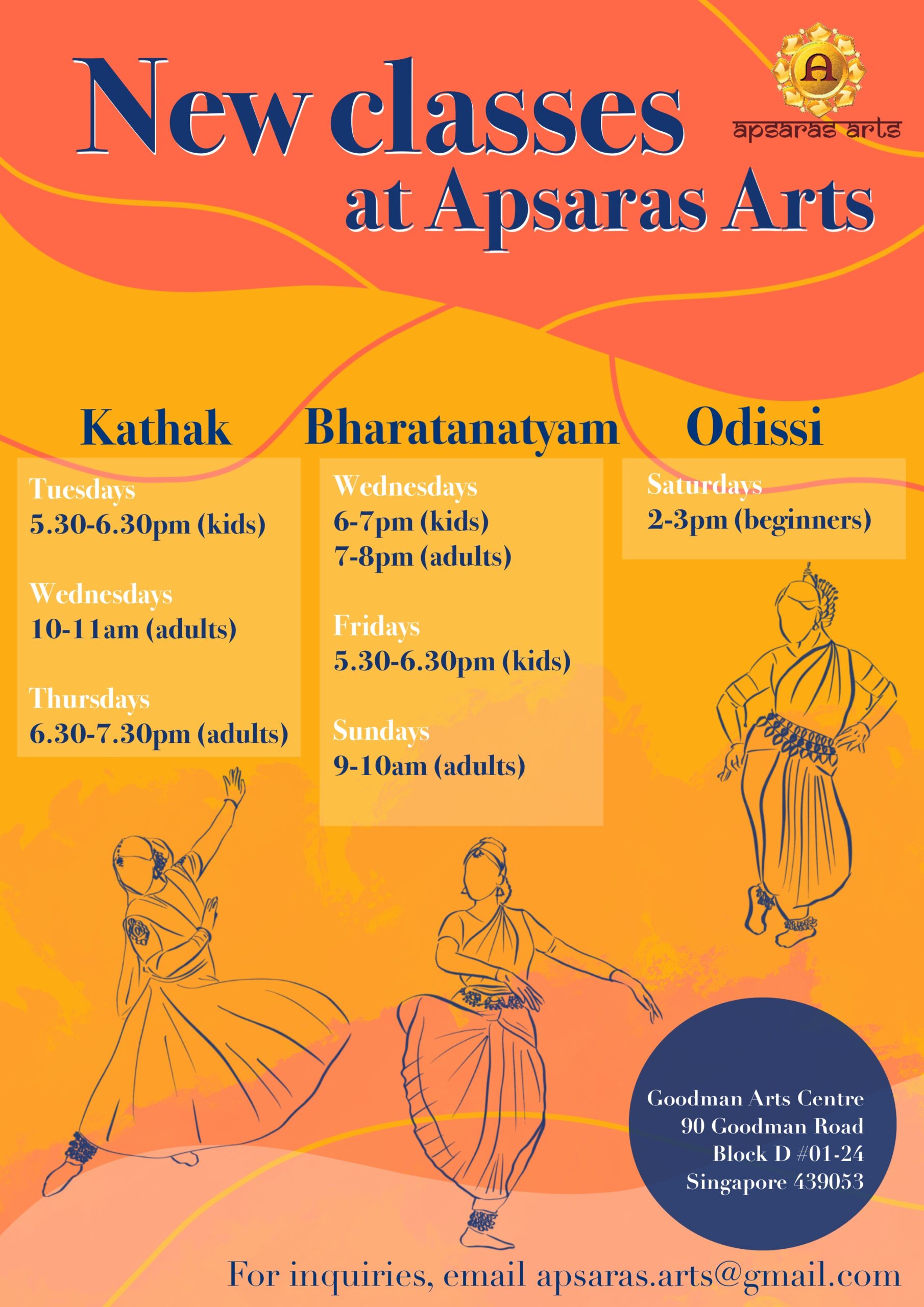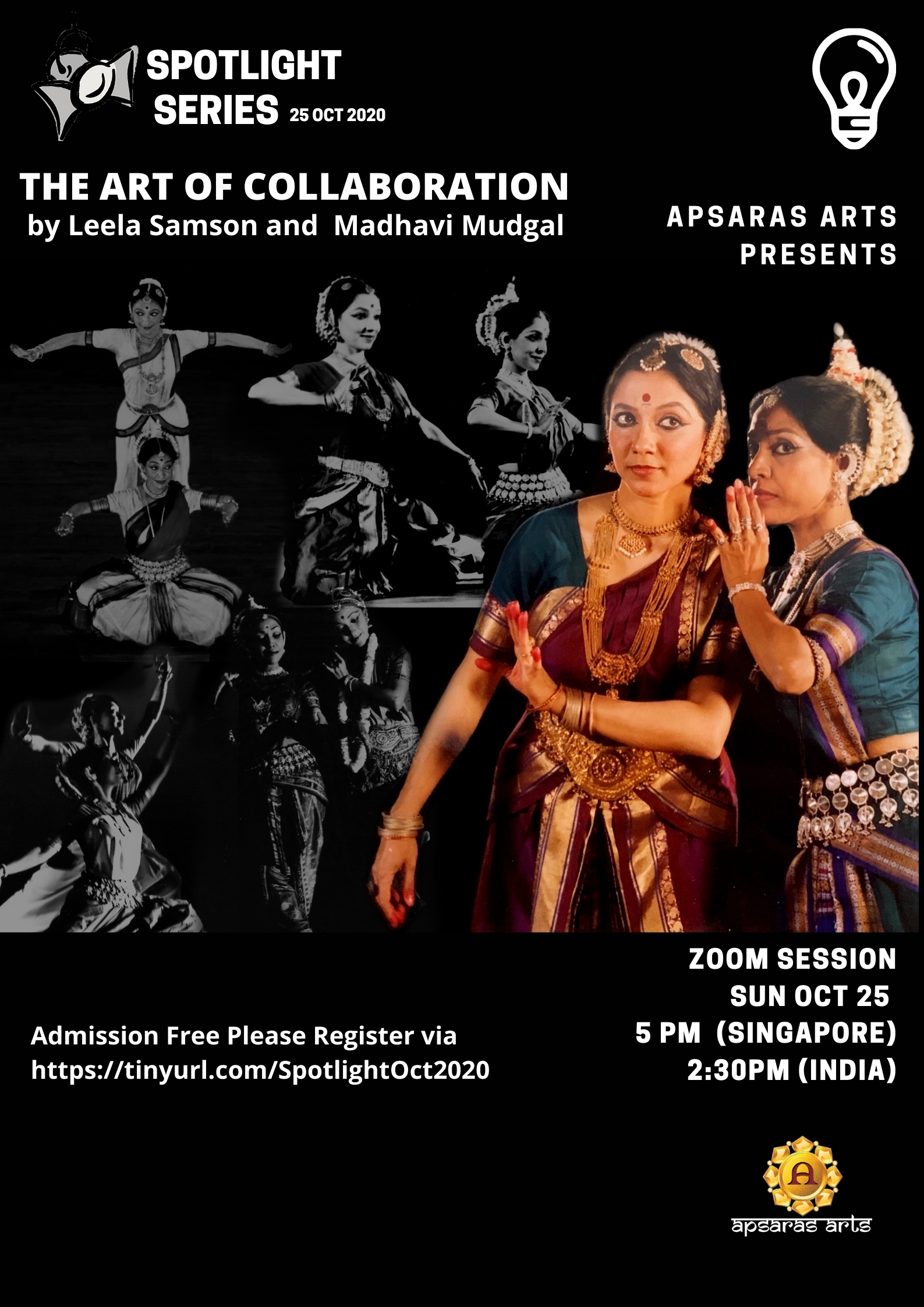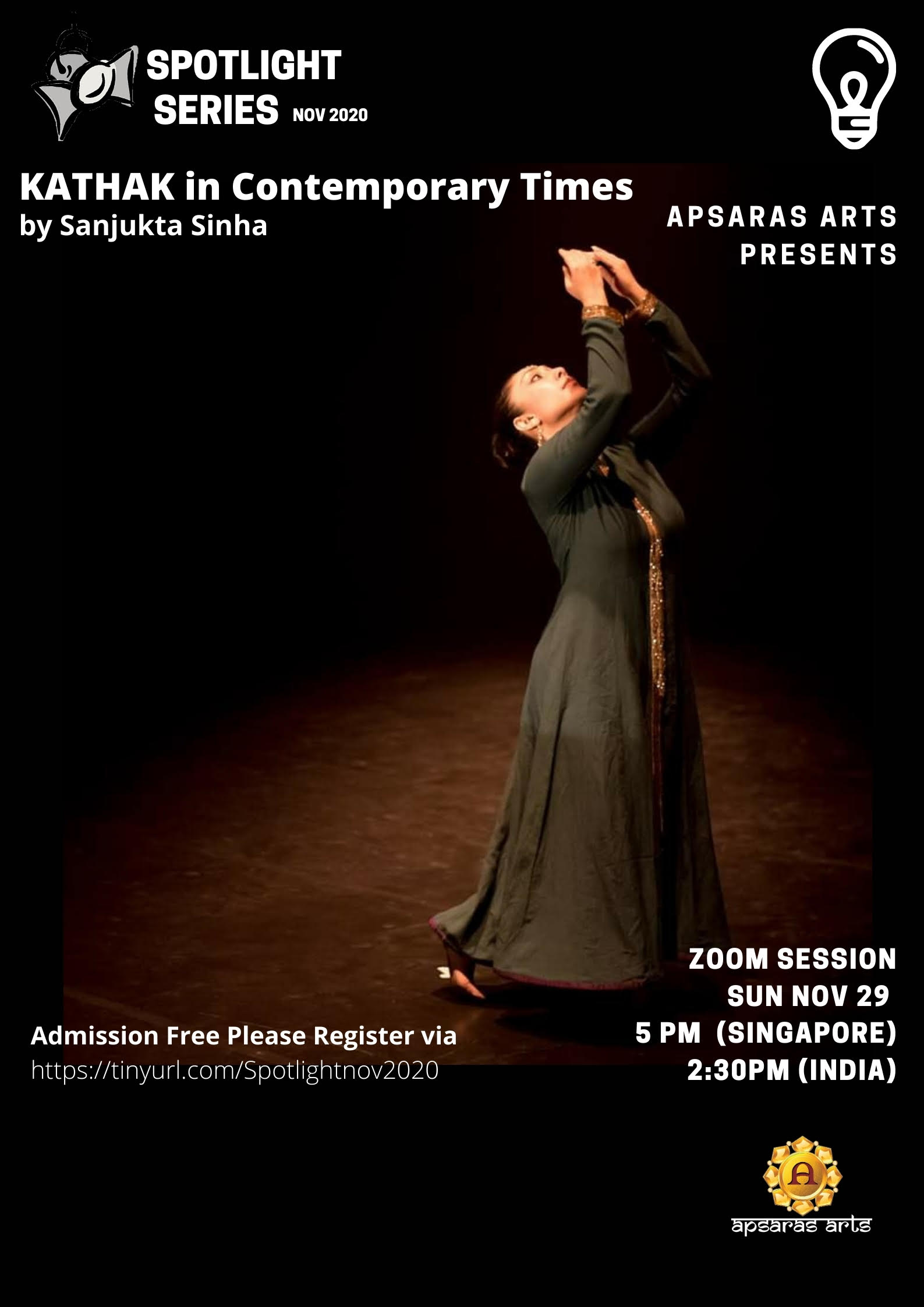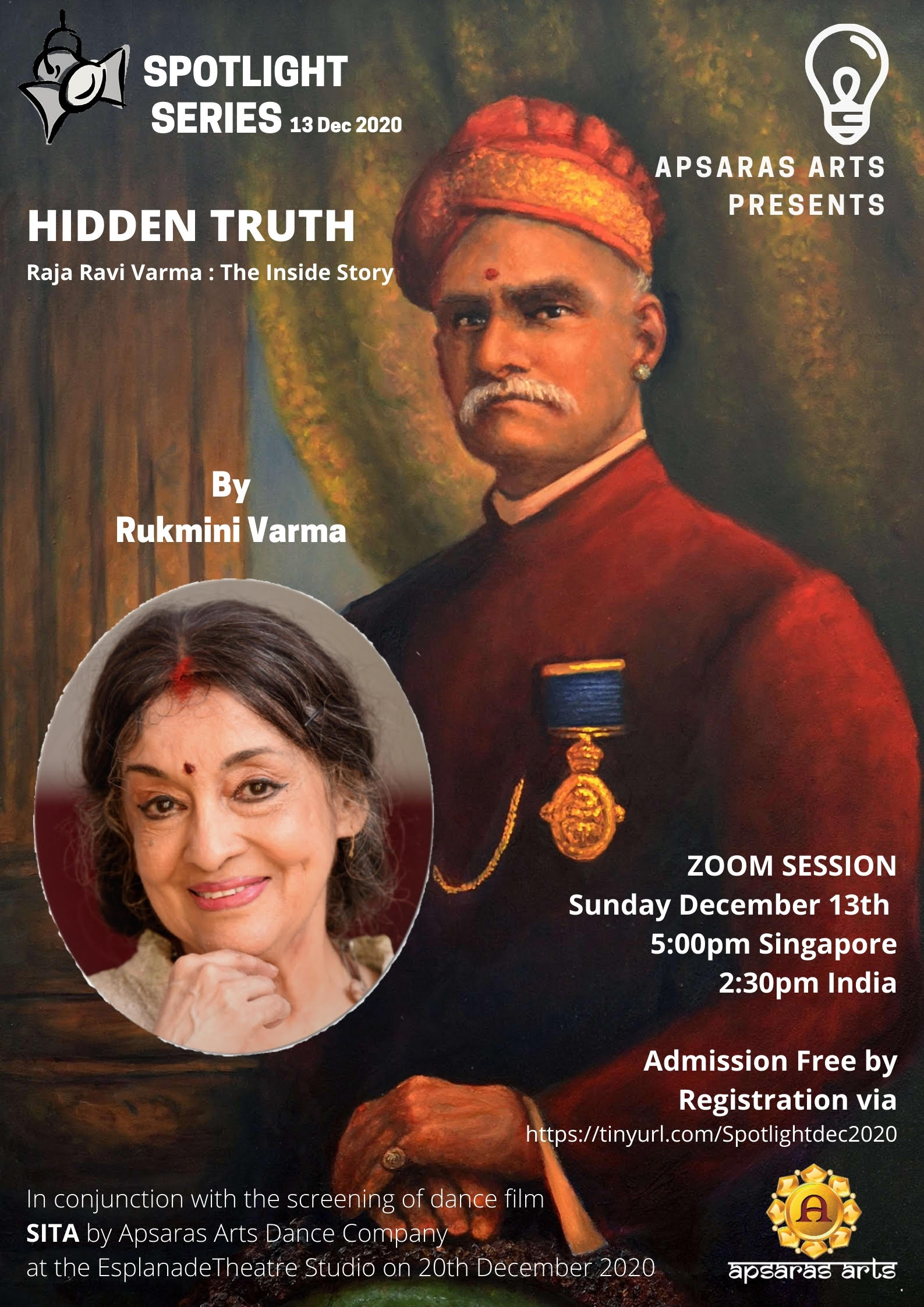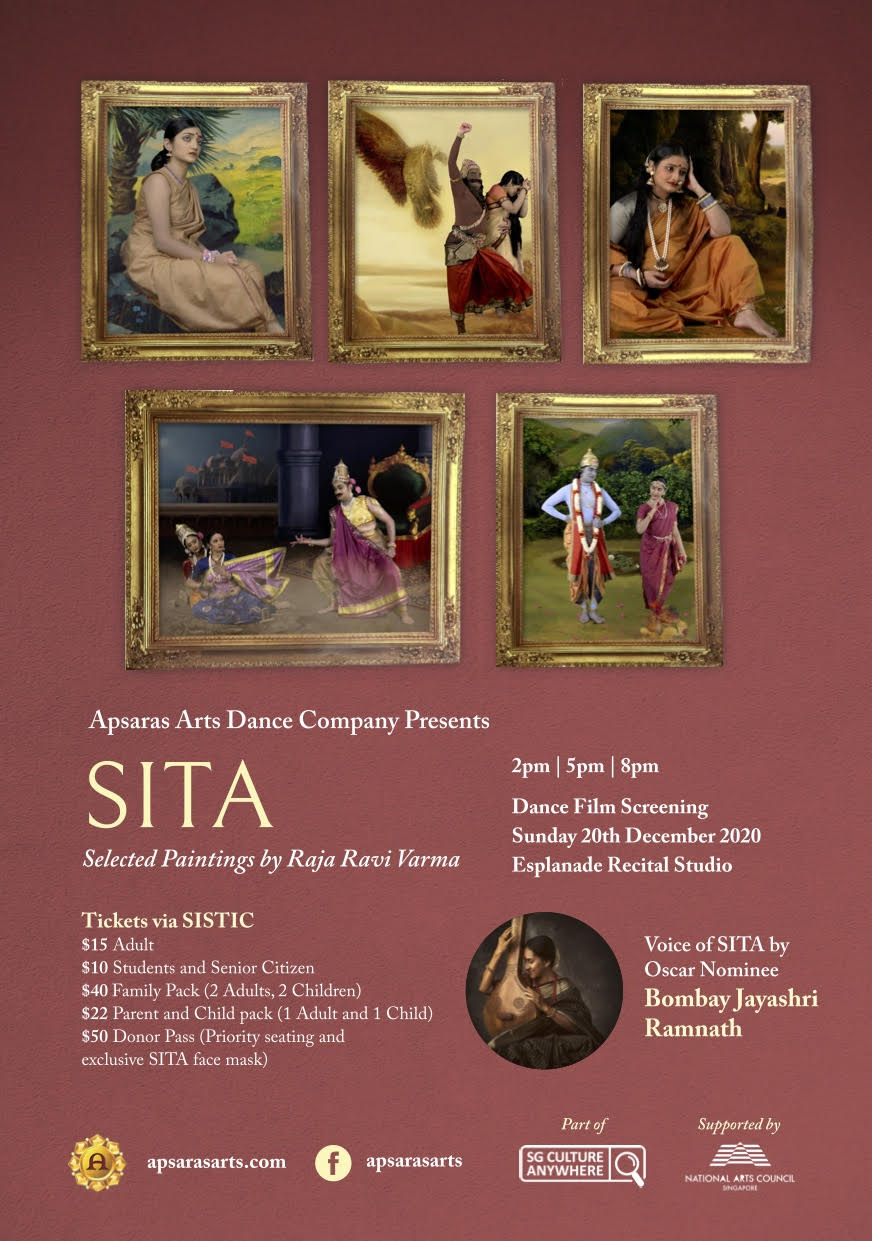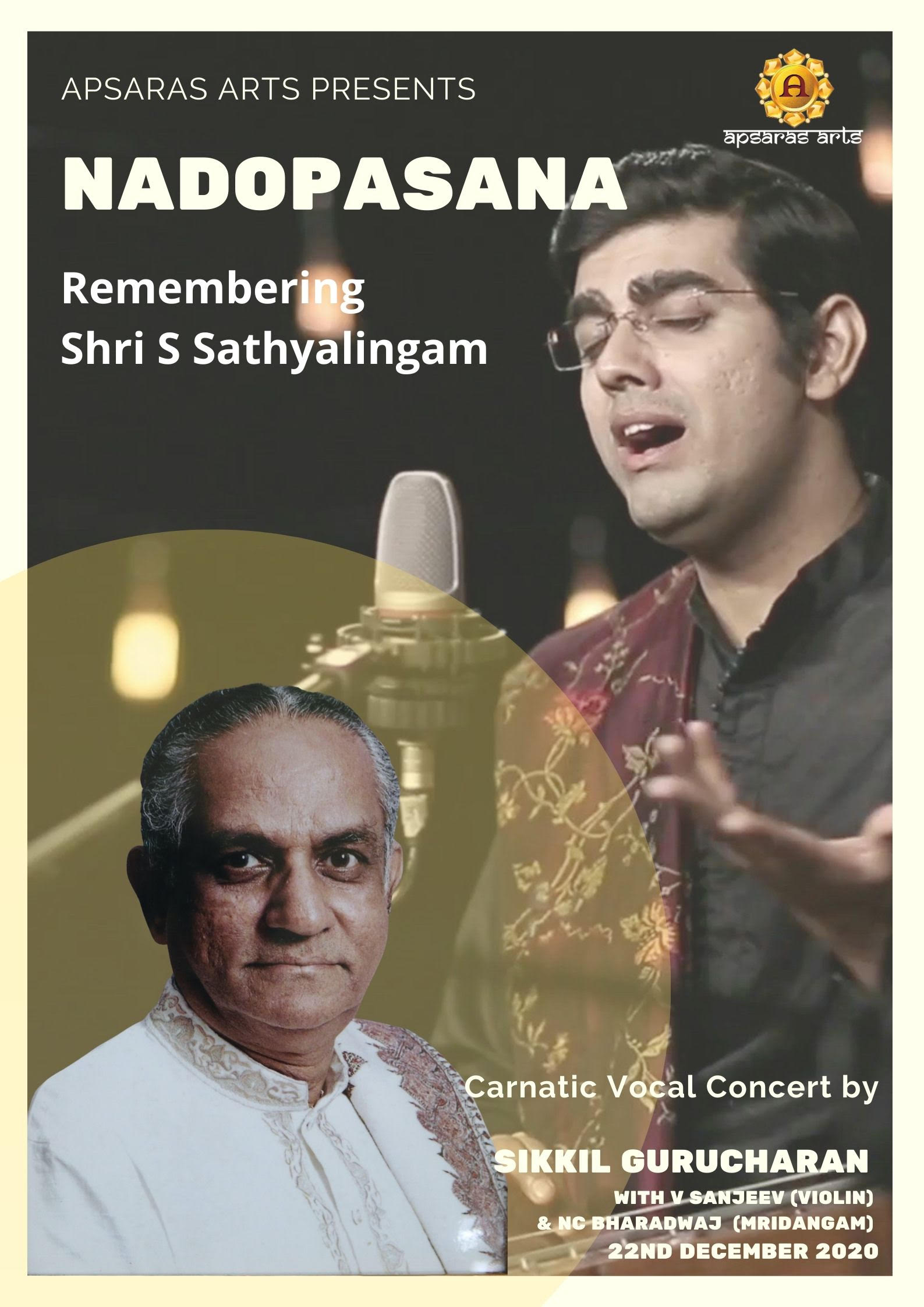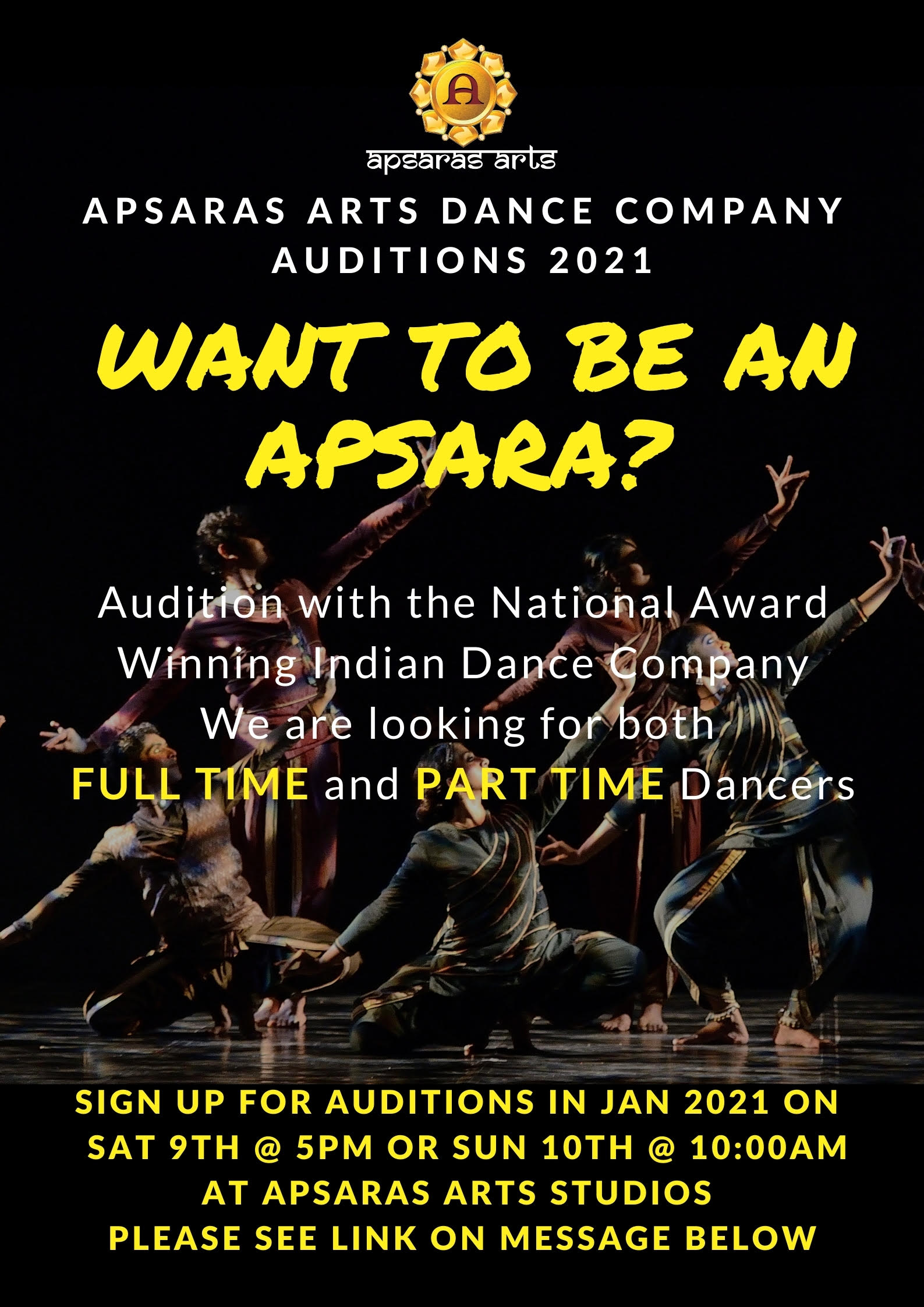COVER STORY
Three costume designers Lakshmi Srinath, Sandhya Raman and Mohanapriyan Thavarajah from Chennai, Delhi and Singapore respectively, share their process, insights and views on designing and creating costume for dance and dancers
Lakshmi Srinath
“My interest in costume grew organically as a result of my passion and career as a visual artist”
“My interest in costume design was organic as a result of me being a visual artist. I had a children’s boutique for about ten years and I started making personalized clothes for people. This went on for a long time. One of my customers, Uma Ganesan from Cleveland, an arts patron and curator, wanted me to design the costume for her upcoming dance production. I protested initially but then she insisted that she liked my vision, aesthetics and the way I put things together. She placed her trust on me and was the one who started off this spark in me. It was a tremendous effort but it went off very well. I created costumes for her production, Silappadikaram and that was my foray into costume for theatre and dance.
I used to design theatre costumes for The Madras Players back in the day but in the context of dance, this was my first experience. I am eternally grateful to Uma because she opened up an entire new creativity in me.”
“Priyadarsini Govind was ready to experiment and gave me full freedom with design”
“After designing costumes for Uma Ganesan’s production in 2004, I did a few designs for Bharatanatyam exponent Meenakshi Chittaranjan. Then of course, with Bharatanatyam exponent, Priyadarsini Govind, I’ve had a long-standing association. Priya was ready to experiment and give me complete freedom but at the same time I had to keep in mind the requirements/ requisites needed for concerts at venues like the Music Academy and so on. I was also not unconventional in thought and it worked for her too. She is a great person to work with. I also did the costume for the theatre production Angkor in Singapore, in which Priya played the lead role and she requested Aravinth Kumarasamy for me to create her and Anjana (Anand)’s costume. I was very happy to do this and it was an amazing experience.”
“The wearer of the costume is the most important”
“Priyadarsini Govind used to experiment quite a bit and I introduced different kinds of fabrics apart from the traditional Kanjeevaram silks, which most of the dancers tend to use. We tried different textures and she was very happy to experiment. So it definitely depends on the person! I have also done lots of clothes for singer TM Krishna as well. He gave me complete freedom and asked me to do what I want. He was open to trying different colours and was flamboyant, which actually goes well with his personality.
I work best if I am given a long rope.”
“The stage is like a canvas and it is important that the balance is maintained”
“It is not a different hat but there are different aspects with which I approach the work. When there are four or six dancers on stage, the look of each dancer has to complement each other. It also depends on the characters they play and for me, the most important thing is the colour. Usually when I see a stage, the balance has to be perfect because it can’t be a lop-sided vision. So it is very important for me that I approach it with a sense of colour.
Colours have to synchronize so well that one person cannot look heavier visually than the other. I also found from experience that colour blocking was most effective on stage. I find the tiny prints that look very pretty appear as a huge mass on stage and I learnt not to use them. The stage is like a canvas and it is important that the balance is maintained.”
“People do say that they see me in my designs”
“India is resplendent with weaves and different kinds of textures. Since I am an artist, my work has a lot of textures in it. So my eye automatically goes towards textures.
I love handlooms, anything done by hand and the imperfections in it. Textiles also fascinate me a lot and this work has given me an opportunity to work with textiles from an artist’s perspective. It has been a great experience!
I don’t know if I have a signature style. All I know is it has to look perfect in my eyes. I am not sure if that is my style. But people do say that they see me in my designs. I just work from my heart!”
“The storyline is very important in important for me in the context of design”
“I always insist on the brief to be clear so that I have an idea on what I am supposed to do. Then I share my thoughts with the producer and when we are in sync, I come up with the sketches. The fabric is very important while designing. When a character walks in with a few other characters already in the background, it all has to synchronize beautifully. So I first pen down the colors out and then check their availability in stores. Then I try to synchronize with what is available and come up with a scheme.
The designs are fairly standard. For costume, it is important to keep in mind that it should be easy to dance in, easy to change into and fabrics that can be maintained easily without much ironing. Because, most dancers travel a lot and do multiple shows and it gets difficult to iron or steam out the costumes for every show. So it has to be practical.
So basically the costumes need to have visual beauty, a structure which is easy to dance in and fabrics which are easy to manage- packing and carrying around. Also, there is jewellery too which needs to be in sync. It is important to ensure there is a balance amongst them all.”
———————————-
Sandhya Raman
“My interest in costume design was sparked by my interest in dance and the inspiration that came from watching some dancers”
“I always enjoyed dancing but couldn’t pursue it as a career and somewhere deep down, the desire kept growing. I met some of the renowned dancers like Sanyukta Pannigrahi, Astad Deboo, to name a few, and was totally mesmerized by their art. I wanted to be part of this experience; several thoughts were flashing in my mind and at that time, an inspiring talk on costuming by Jonathan Hollander from the Battery Dance Company re-kindled my love for dance with a new purpose and direction. This is it; I can watch and learn movement so closely I thought.”
“My love affair with costume design began three decades ago”
“I was brimming with enthusiasm and ideas to make designs for performing arts. Moonbeam, my very first ballet choreographed by Jonathan Hollander way back in 1991, with Mallika Sarabhai as the lead dancer, was my first project as a costume designer. I introduced the gorgeous diaphanous Bengal cottons and designed these flowing majestic robes which brought out the sensuous and romantic mood of the production.”
“The biggest challenge for a costume designer is to retain the dancer’s personality.”
“I always try to understand the dancer, their concept and ideate with that in mind. I do try to create a cohesive look which does not overpower or underplay the concept or the dancer. I have always tried to create a look for my dancer keeping them in mind and that is possible only after knowing the dancer and understanding their genre of dance.”
“Designing thematic costumes always stimulates the mind”
“You have to do a lot of research and have a complete understanding of the concept. There is so much to learn while handling such a project. Whenever I am roped in as a design collaborator, all I do is to listen. I keep my eyes open and absorb. As a designer you need to wear multiple hats always, as you have to think from many viewpoints, and come up with solutions.”
“The connection between the weavers and the dancer is amazing; both are expressions that are framed by a rhythm, both speak of fine artistry and need precision and perfection”
“I have worked extensively across the length and breadth of India, reviving textiles, embroideries and bringing them to the forefront. I find textiles so nuanced that it can take a lifetime to understand its vastness. The connection between the weavers and the dancer is amazing; both are expressions that are framed by a rhythm, both speak of fine artistry and need precision and perfection; both bring out the ultimate awakening of senses. Costuming is the coming together of these spectacular art forms. To understand these expressions you need in-depth understanding of both subjects and a burning passion.”
“Each designer has a signature style, and for me, less has always been more”
“I celebrate minimalism and subtlety. Every project that I take up, I visualise the dancer performing, I watch the rehearsals and make my notes. My costumes are about fit and forget, I love playing with colours and textures. I pay a lot of attention to details and perfect finish. I treat my costumes like treasure, and constantly upgrade the thought process of getting costumes designed. I am passionate about every costume I make. I believe that costuming is bringing art and science together which makes it a key ingredient of a performance.”
“Usually a dancer collaborates with a designer right at the concept level”
“As a designer we start work on the brief we get. Usually a dancer collaborates with a designer right at the concept level. The inputs come in from various conversations/ discussion and reading up about the concept. To flesh out the understanding one ideates or brainstorms and that’s when a mood board is created. Many concepts are made and feedback is taken to refine the concepts. The fabric and colour palette is discussed. One has to watch the process, the rehearsals and by now you have translated all that you have visualised and samples have to be made in mock fabrics and finally after all approvals are taken you venture to make the final prototype.”
—————————-
Mohanapriyan Thavarajah
“My creativity in costume was first sparked off in the temple”
“Since my childhood days, creativity has been one of my best companions. As I grew older, it rooted itself firmly within me, and I began to see the beauty through the eyes of aesthetics. Often my friends around me wonder how aptly my parents found a name for me, Mohanapriyan, a lover of beauty or perhaps because of the name, the universe blessed me to be creative.
I can’t leave any object that makes me feel less, and I would immediately think, how can I contribute to making this beautiful?
Growing up in Sri Lanka with a Tamil cultural practice, serving in the temple would be one of the top priorities that my mother initiated in me. My parents were determined that I should have more exposure to the arts after recognising my interest in all things creative. My parents are the patrons of the temples in our hometown, so I have a deep connection with the temple environment, where I began to see the hues and colours in detail.
My creativity in costumes was first sparked off in the temple. When I was ten, I received a Samaya Deeksha from the temple priest; this status allowed me to enter the Vasantha Mandapam, where the festival bronze idols are kept. I used to observe how idols are decorated. I used to wonder how the un-covered idols are dressed up in detail. In the same atmosphere, learning to tie different types of garlands, sing the Thevaram, hymns of lord Shiva, lead bhajans, and design kolams flourished my passion for creativity. I don’t know how religious I am today. Still, the experience I have gained in these surroundings has always been entrancing and has profoundly impacted the depth of my dance and all other creative works associated with dance.”
“Dance made me realise that I have a love for aesthetics”
“In dance only, I have learnt how beautiful patterns are made. Dance convinced me that body movements can create ravishing aesthetics. Dance taught me the philosophy that deals with questions of beauty and artistic taste.
You see, dance composition comprises various layers that make the choreography unique and effective at the point of execution. When I envision the costumes, I draw the aesthetics of the dance composition’s lyrics, mood and emotions and the intent of the choreography. I thoroughly study the choreographic process. After that, I add another layer to the choreography through my costume design.
Being a dancer and envisaging costume design gives me more understanding of the holistic look of the costume and its functions. I strongly feel that custom-made costumes have an enormous role in giving an identity to the dance piece.
For instance, many of us today can identify Hindu pantheons, characters featured in Puranas and epics based on the symbols associated with each one. They bring an imagery of who they are and display their attributes. Likewise, the costume’s authenticity also should showcase in its design pertaining to the particular concept it is created for.”
“I love exploring new horizons as I believe in newness”
“I learnt a lot about textiles from my past experiences, which has enabled me to identify textiles, particularly their usage in design. It has been a fascinating journey. The fabrics and the colours differ from our lenses at the store and on stage. While choosing a material, the designer should acquire the ability to differentiate how the fabrics look in the design and how they would look on stage under the lights. Finding the right hues of colours can be quite a task. It is like finding treasure.
I always try to pick the right hues of colours and stand by them. For that, I try to go to as many stores as possible; but somehow finally, almost intuitively, I finally pick the best from what I originally planned.
I have designed costumes with various materials for just one body of the costume. Silk has its ethereal beauty as most Bharatanatyam costumes are made of silk. In addition to silk, I allow myself to incorporate various materials for Bharatanatyam costumes to give it a sense of freshness. Learning about the quality and texture of various textiles and weaves, sparks many innovative ideas. My signature designs incorporate prominent and subtle details that will have a story and character with an impact.”
“My costumes reflect a part of my personality”
“I would like my costumes to carry a certain class and bring sophistication when worn by a dancer. I do not mean the class to be elaborate designs or inclusive of expensive materials. It’s about a perfect harmony of appropriation and simplicity too. I freeze visual aesthetics in a material form through a sketch and allow it to unfold into a costume.
This process can be time-consuming, but investing the required time for this work is worth the effort. Costume is eventually a piece of art, and the creative process sometimes includes more than one artisan. So my work also demands manpower specialized in their particular area of skill.
I carefully consider a dancer’s physical outlook while costumes are specifically designed for individuals. As far as the dance costume design is concerned, it is not about showcasing the mastery of a designer. Although, it is essential to use the sensibility to apply the right design that enhances the beauty of a dancer. The costume should also reflect who the artiste is, and be able to lend the perspectives of the particular theme or character she/he plays on stage. It should not conflict with the dancer’s outlook and defeat the purpose of custom designing.”
“While designing costume, it is essential to understand the concept and the creator’s thought and perspectives”
“In my practice, I create costumes in advance to buy more time for modification if needed. A costume I design may need tweaking when worn during the dress rehearsal. Most of the time, it is not at all necessary. That is why I feel the costume designer’s participation is crucial during the production process so that he/she is in line with the changes added to the work and will have better impacts during designing.
Another factor is, it is essential to understand the concept and the creator’s thoughts and perspectives on the work. Studying the work and researching the related topic will also give me a larger picture to envision the designs. In my approach, I create a story for each costume and allow it to have a connection with a dancer. The costume is the core performer, and the detail’s value adds to the dancer’s movements. When it comes to classical dance, I keep in mind to retain the authenticity of the costume for that particular genre while exploring the possible ideas for further development.
Making a costume is like planting a seed, watching it grow stage by stage, and seeing the beautiful flower bloom in it. The seed here is an idea that turns into a sketch, transforms into a sample design, the choice of colour will complete the look, and finally, incorporating details to enhance makes the costume come alive.
It is a fulfilling and rewarding experience to witness first-hand, the transformation from creative ideas to it materializing into a beautiful and functional costume of a dancer on the stage showcasing its unique story. I take pride in creating each costume because it is truly a labour of love with enormous creative thoughts and a collective effort of artisans.”
Cover story
COVER STORY Into the Music of Dance Our Cover story this edition features three musicians and music composers for dance from India, who share their experiences of making music for dance SUDHA RAGHURAMAN Carnatic Vocalist, Composer and Music Arranger What is that characteristic aspect that differentiates composing music for dance and composing music in general? ... Read more
Jun 1, 2023
Read More >Cover story
COVER STORY Master Weaver of Magic Raising a toast to Aravinth Kumarasamy, Artistic Director of Apsaras Arts, as he receives one of the most prestigious accolades for arts practitioners in Singapore – the Cultural Medallion… In the first week of December, Apsaras Arts Artistic Director Aravinth Kumarasamy, the man who needs no introduction to the ... Read more
Feb 16, 2023
Read More >Cover Story
Cover Story Dance of the Camera What happens when dance is on film? Do things shift for the artiste and choreographer when they are being seen through the camera’s eye? How do they negotiate this medium to create a work-of-art that is authentic to the dance and to cinema? Three senior Bharatanatyam artitses – Aravinth ... Read more
Oct 31, 2022
Read More >Cover story
COVER STORY Privilege, possibilities and experiences… We reached out to six Bharatanatyam male artistes from across the globe and asked them a common set of questions to feel enriched with a plethora of ideas and insights on inclusivity, gender-neutrality, exploration and experimentation, research and expression and about the beauty of art and how it enables ... Read more
Aug 29, 2022
Read More >Cover story
COVER STORY Let’s Talk Conservation Two young and talented Bharatanatyam artistes, Mahathi Kannan and Manasvini Ramachandran, share their interest, journey in working with the tangible and intangible in the arts… An interview Qus : What has been your fascination with the idea of heritage? When did you know that you wanted to study it formally ... Read more
Jun 24, 2022
Read More >Vision for Dance 2022
Vision for Dance 2022 A straight-from-the-heart response from dancers and curators on their vision for dance Rama Vaidyanathan Bharatanatyam exponent “My vision for dance this year is to bring it back to stage; in front of a live audience. I am also hoping that when dance returns full-fledged to stage, it is enriched and nuanced, ... Read more
Mar 8, 2022
Read More >National Award for Apsaras Arts Dance Company
Presented by National Heritage Board of Singapore on 10th December 2020 Acceptance speech by Aravinth Kumarasamy, Artistic Director of Apsaras Arts Dance Company. “Dear Guest of Honour, Minister of Culture, Community and Youth, Mr. Edwin Tong, Ms. Yeoh Chee Yan, Chairman of NHB, and Ms. Chang Hwee Nee, CEO of NHB. Good afternoon. Receiving this ... Read more
Dec 30, 2020
Read More >AMARA – Making the Impossible Possible
Special Feature by Mohanapriyan Thavarajah “From the forest of his matted locks, water flows and wets his neck, on which hangs the divine snake like a garland, and his drum incessantly plays damat, damat, damat, damat.” Thus, Shiva is engaged in a very vigorous Tandava dance, to bless and shower, prosperity on the entire universe. ... Read more
Nov 17, 2020
Read More >Dancing the Stories of Banteay Srei
AMARA: Dancing the Stories of Banteay Srei Inspired by the legends and the stories carved in its bas reliefs of the enchanting temple of Banteay Srei, this dance production brings to life the female divine Yoginis of the temple, which was once called the “citadel for women.” Apsaras Arts Dance Company is proud to present ... Read more
Oct 21, 2020
Read More >Odissi Dance Exchange: ODE by ETHOS
Over the months of May to July, Soumee De, Odissi faculty of Apsaras Arts, curated a series of webcast session for dance students, performers and teachers by inviting scholars, researchers and experts to share their practice, knowledge and experiences over an interactive dialogue. Over 10 episodes on Friday evenings, this series featured eminent speakers on ... Read more
Jul 20, 2020
Read More >Subscribe to our newsletter
to keep up to date with all our shows, performance tours, workshops & opportunities.
Individual Devata Sponsors
Address: Block D #01-24 90 Goodman Road Singapore 439053 | Email: apsaras.arts@gmail.com
© 2018 Apsaras Arts Indian Premier Dance Company. All Rights Reserved.



































